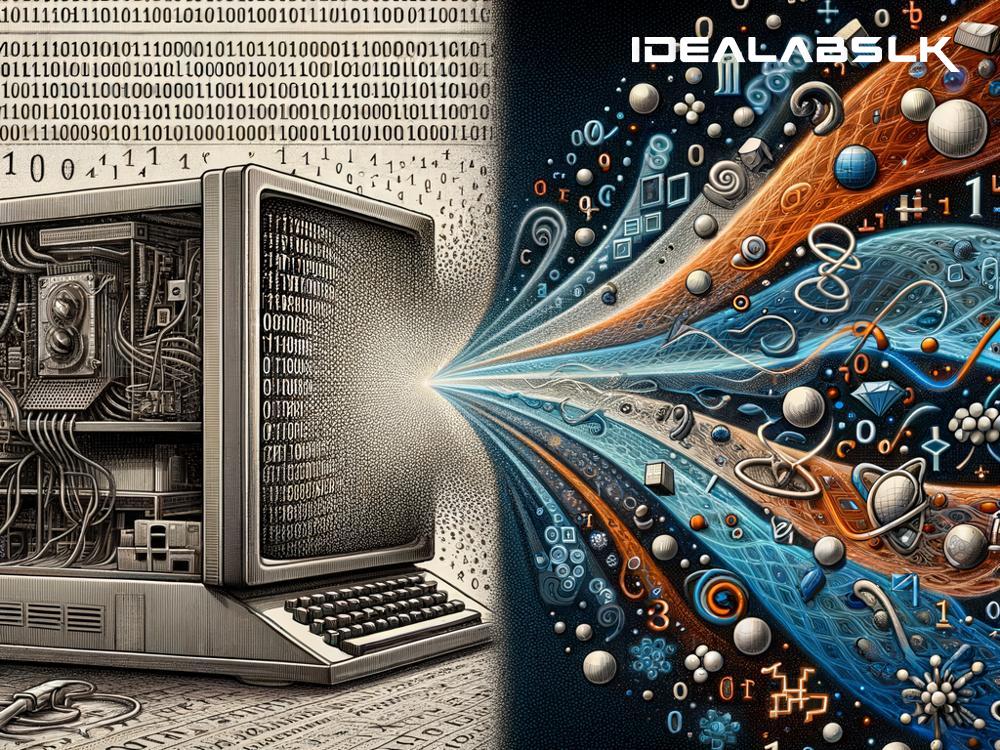Quantum Mechanics: The Gateway to Quantum Computing
Imagine you’re watching a magician pulling a rabbit out of a hat. That feeling of wonder and confusion? That’s pretty similar to what many of the brightest minds felt when they first encountered the mysteries of quantum mechanics. But little did they know, this rabbit hole of quantum weirdness would lead to the revolutionary concept of quantum computing. Let’s embark on a journey through time and science to uncover how the perplexing world of quantum mechanics evolved into the groundbreaking realm of quantum computing, all explained in simple English.
Quantum Mechanics: A Brief and Simple Introduction
Quantum mechanics is a fundamental theory in physics that provides a description of the physical properties of nature at the scale of atoms and subatomic particles. In simpler terms, it’s the rulebook for how things work on a really, really small scale. What makes it fascinating and a bit strange is how different these rules are from our everyday experiences.
One of the core principles of quantum mechanics is the idea of superposition. Imagine if you could be in two places at once—sounds impossible, right? Well, particles at the quantum level can do just that. They can exist in multiple states at the same time until they are observed or measured. This is like flipping a coin and having it be both heads and tails at the same time, instead of just one or the other.
Another mind-boggling concept is entanglement. This is where two particles become linked, and the state of one (whether it’s spinning in a particular direction, for example) can instantly depend on the state of the other, no matter how far apart they are. It defies the classical idea that nothing can travel faster than light, because it seems as if information between entangled particles is being transmitted instantaneously.
From Quantum Weirdness to Quantum Computing
So, how did we leap from these abstract principles to the practical idea of a quantum computer? It all started with trying to understand and harness these unusual behaviors of particles for computing.
The conventional computers we use today, from smartphones to supercomputers, process information in bits. Think of them as tiny switches that can be flipped on or off, representing a 1 or a 0. All the complex operations your computer performs, at their most fundamental level, boil down to a vast series of these simple binary choices.
Quantum computing, however, uses quantum bits or qubits. Thanks to superposition, a qubit can be a 1, a 0, or both at the same time. This means a quantum computer can process a vast amount of possibilities simultaneously. It’s like being able to read and understand every book in a library at the same instant, rather than going through each book one by one.
Entanglement adds another layer of power. It can create shortcuts that allow quantum computers to solve complex problems much more efficiently than classical computers. For example, cracking a code that might take a classic computer thousands of years to decipher could, in theory, be done by a quantum computer in a fraction of that time.
The Quantum Leap into the Future
The promise of quantum computing is vast. It’s not just about doing things faster; it’s about tackling problems that are currently beyond our reach. From developing new medicines to solving complex environmental issues, and even revolutionizing cybersecurity, quantum computing could redefine our capabilities.
However, it’s important to note that we are still in the early stages of making quantum computing widely accessible. Researchers are making incredible progress, but there are substantial technical challenges to overcome. Quantum systems are incredibly sensitive; even slight changes in temperature or electromagnetic fields can cause errors. Moreover, creating and maintaining the state of qubits for a sufficient time to perform computations is a difficult task.
Conclusion: Embracing the Quantum Future
The journey from the bewildering concepts of quantum mechanics to the pioneering development of quantum computing has been nothing short of remarkable. As scientists continue to unravel the potential of the quantum world, we stand on the brink of a new technological era. Quantum computing is not just a testament to human curiosity and ingenuity; it’s a reminder of how embracing the unknown can lead to transformative advancements. The quantum future is bright, and it promises to reshape our world in unimaginable ways.

